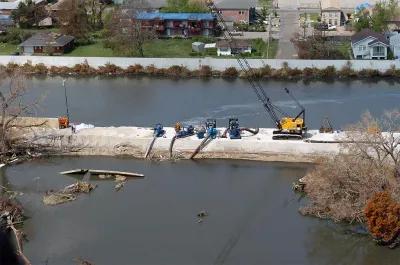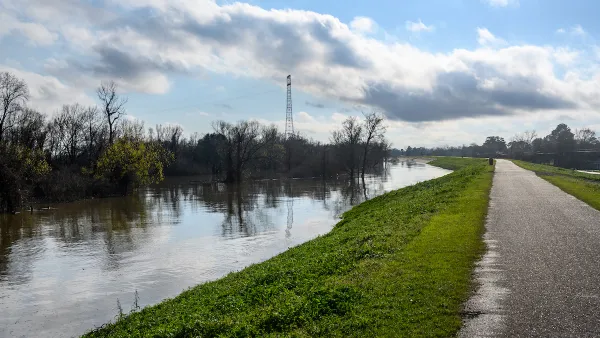The Army Corps of Engineers is already assessing the needs of repair work on a project it completed in May 2018 at the cost of $14 billion.

Thomas Frank sums up a distressing state of affairs in Louisiana:
The $14 billion network of levees and floodwalls that was built to protect greater New Orleans after Hurricane Katrina was a seemingly invincible bulwark against flooding.
But now, 11 months after the Army Corps of Engineers completed one of the largest public works projects in world history, the agency says the system will stop providing adequate protection in as little as four years because of rising sea levels and shrinking levees.
Frank also explains about why the new flood control system has so quickly become obsolete:
The agency’s projection that the system will “no longer provide [required] risk reduction as early as 2023” illustrates the rapidly changing conditions being experienced both globally as sea levels rise faster than expected and locally as erosion wipes out protective barrier islands and marshlands in southeastern Louisiana.
At particular risk are the "earthen levees that form the backbone of the 350-mile maze of protection that includes concrete floodwalls, pump stations and gated structures," according to Frank. The levees are settling as the sea level rises.
FULL STORY: After a $14-Billion Upgrade, New Orleans' Levees Are Sinking

National Parks Layoffs Will Cause Communities to Lose Billions
Thousands of essential park workers were laid off this week, just before the busy spring break season.

Retro-silient?: America’s First “Eco-burb,” The Woodlands Turns 50
A master-planned community north of Houston offers lessons on green infrastructure and resilient design, but falls short of its founder’s lofty affordability and walkability goals.

Delivering for America Plan Will Downgrade Mail Service in at Least 49.5 Percent of Zip Codes
Republican and Democrat lawmakers criticize the plan for its disproportionate negative impact on rural communities.

Test News Post 1
This is a summary

Test News Headline 46
Test for the image on the front page.

Balancing Bombs and Butterflies: How the National Guard Protects a Rare Species
The National Guard at Fort Indiantown Gap uses GIS technology and land management strategies to balance military training with conservation efforts, ensuring the survival of the rare eastern regal fritillary butterfly.
Urban Design for Planners 1: Software Tools
This six-course series explores essential urban design concepts using open source software and equips planners with the tools they need to participate fully in the urban design process.
Planning for Universal Design
Learn the tools for implementing Universal Design in planning regulations.
EMC Planning Group, Inc.
Planetizen
Planetizen
Mpact (formerly Rail~Volution)
Great Falls Development Authority, Inc.
HUDs Office of Policy Development and Research
NYU Wagner Graduate School of Public Service



























